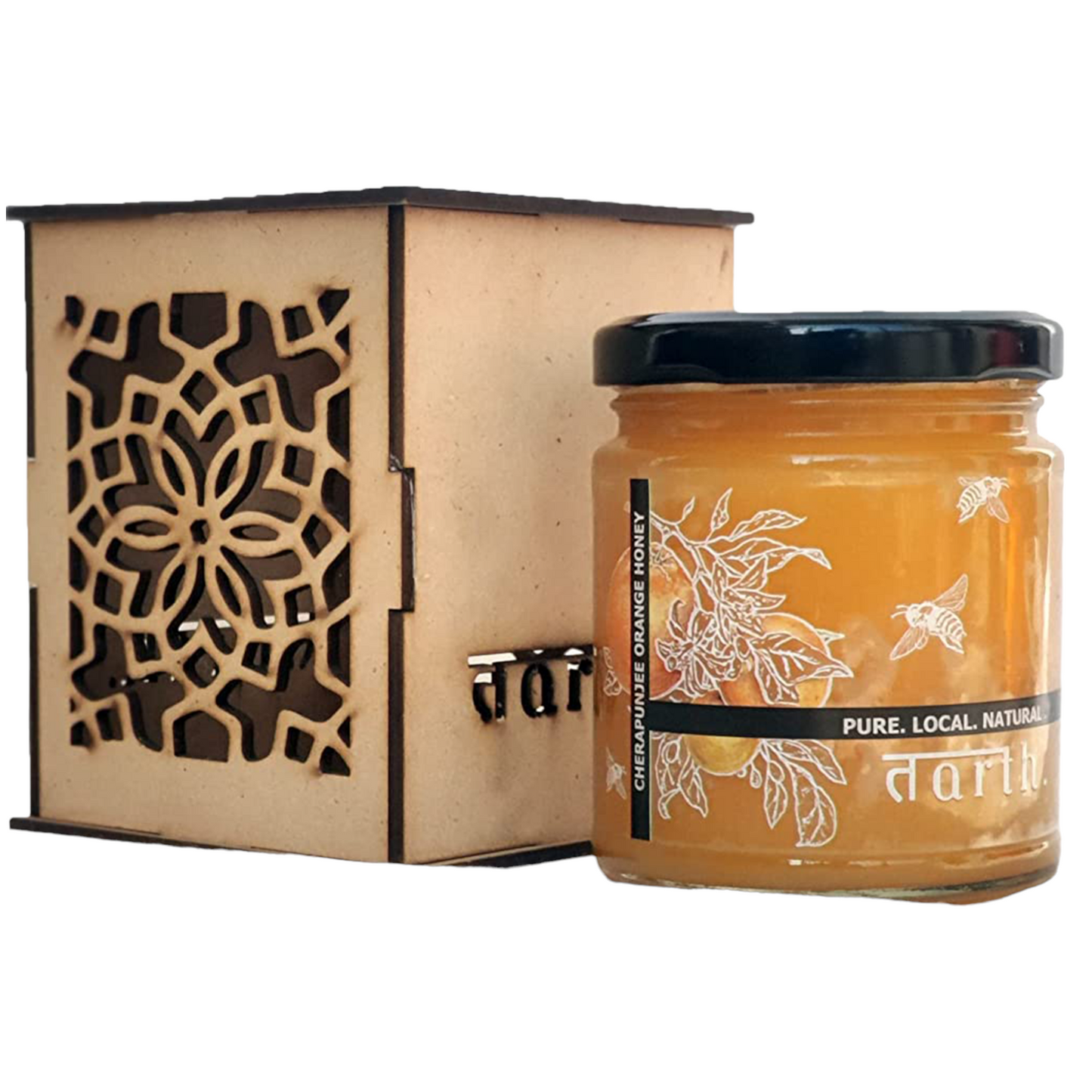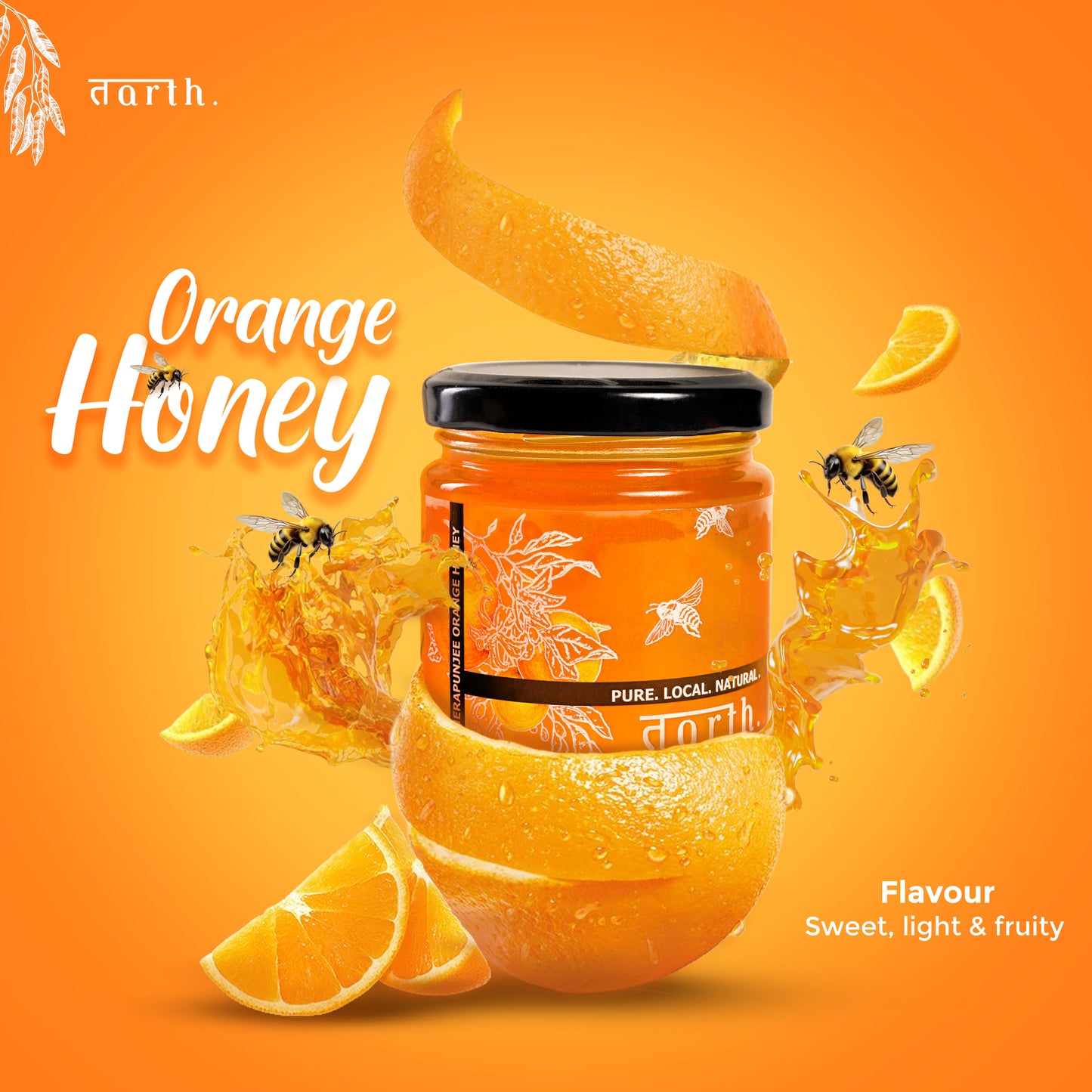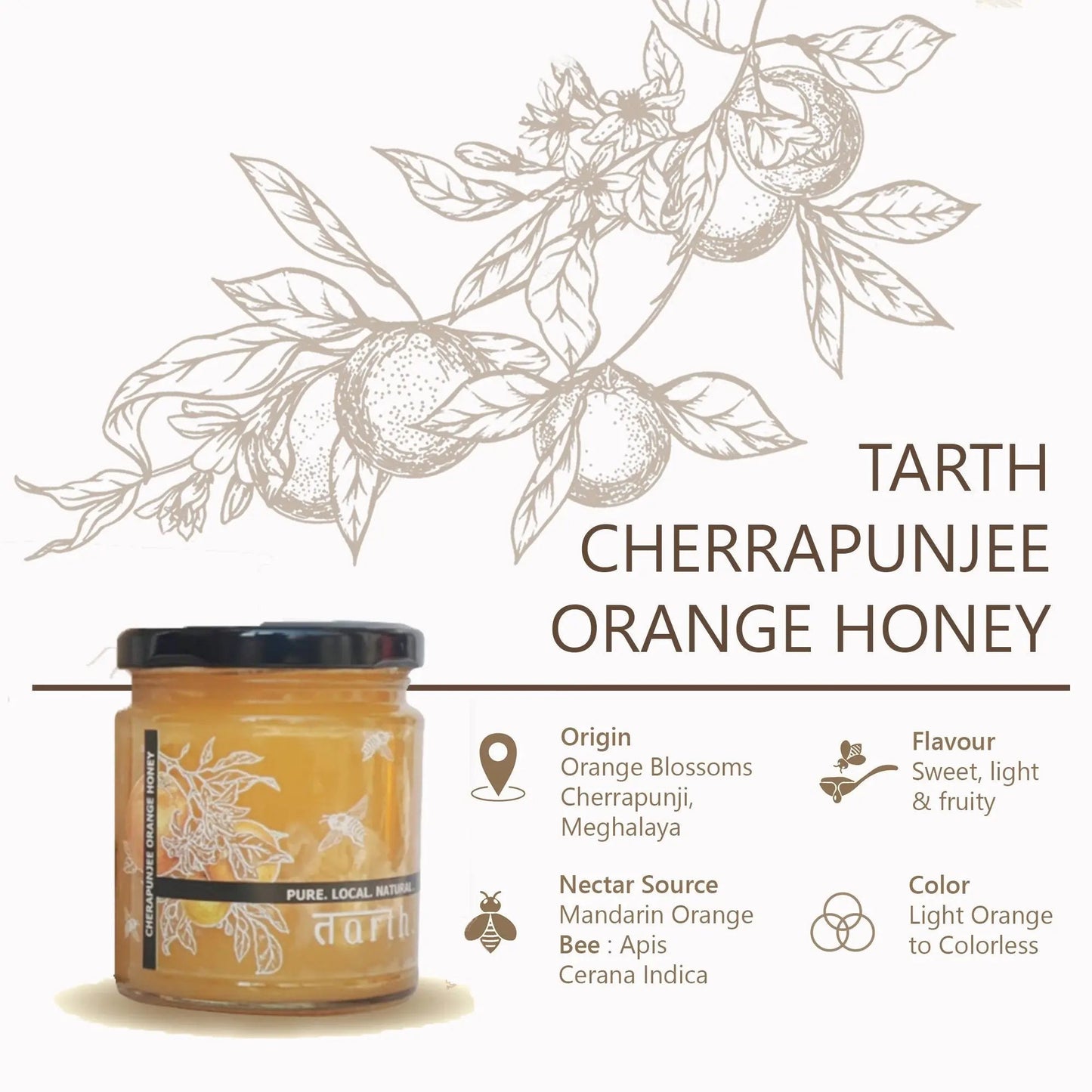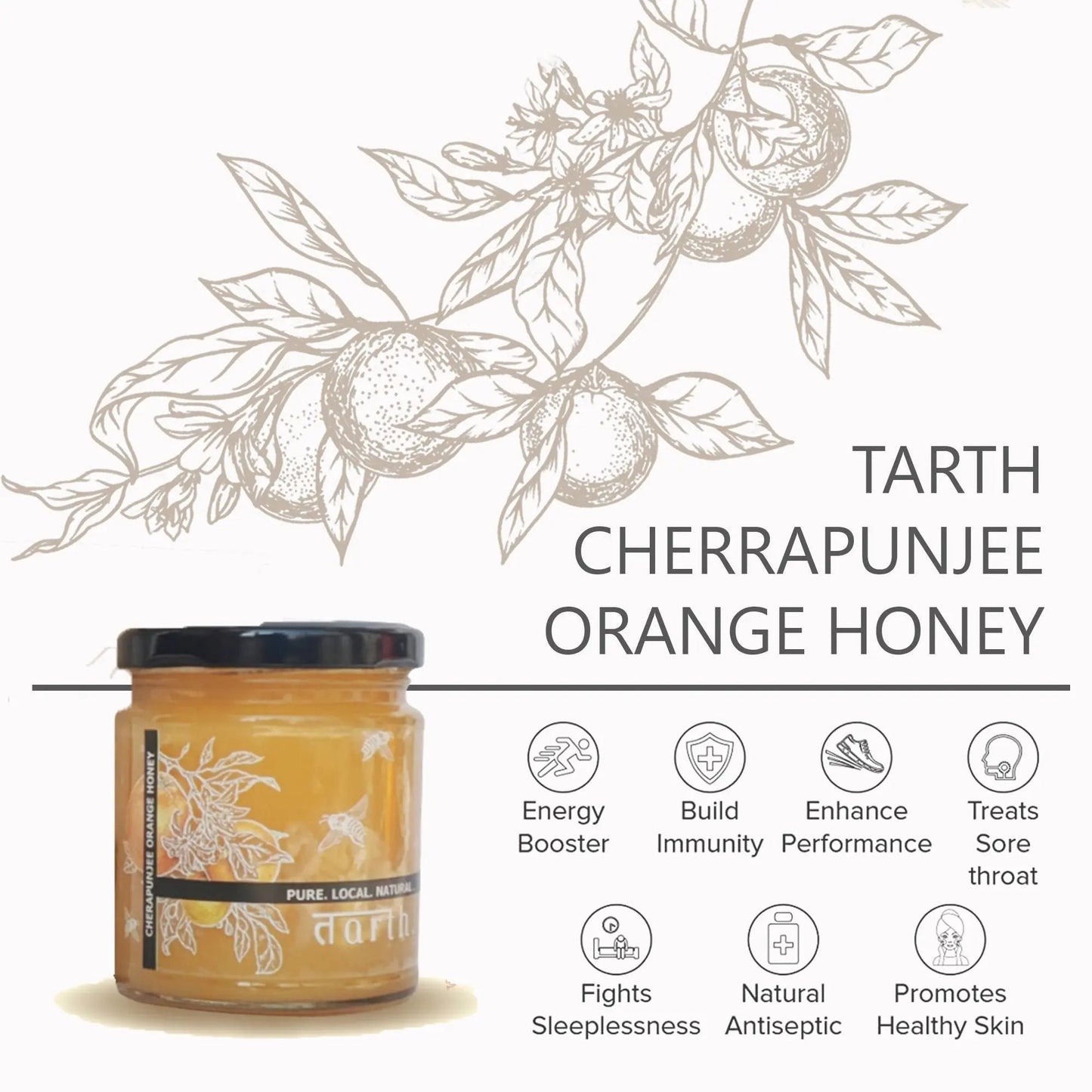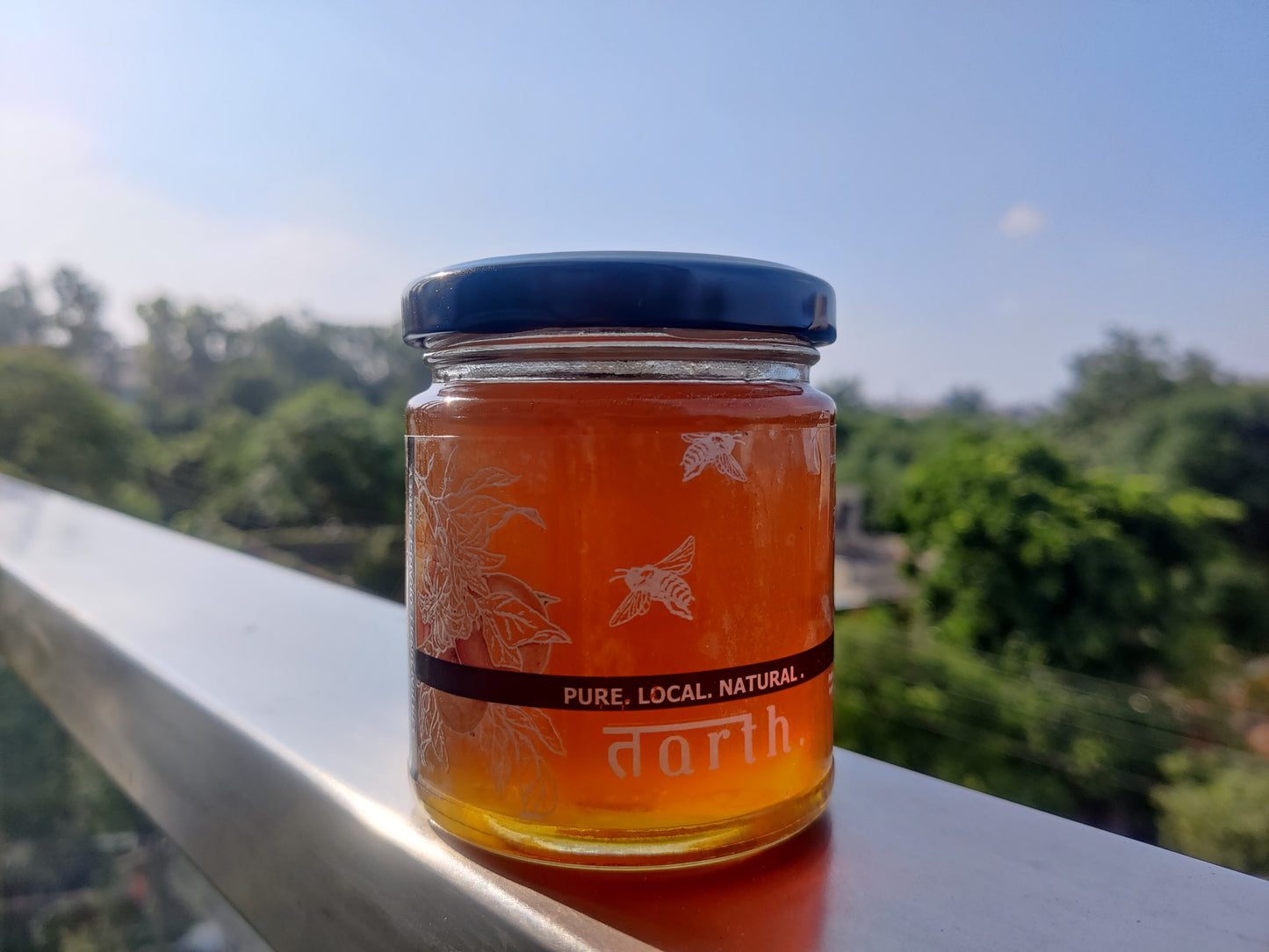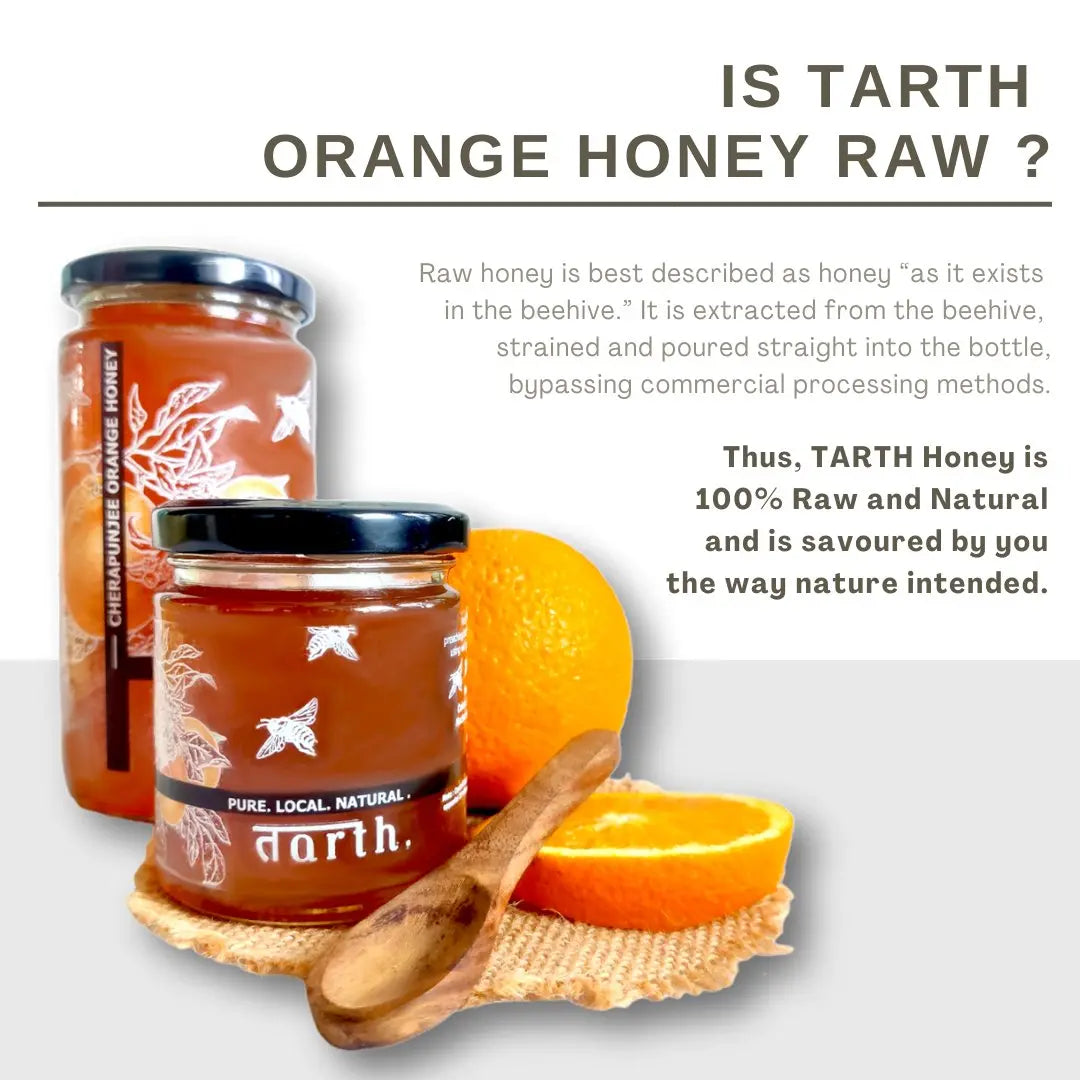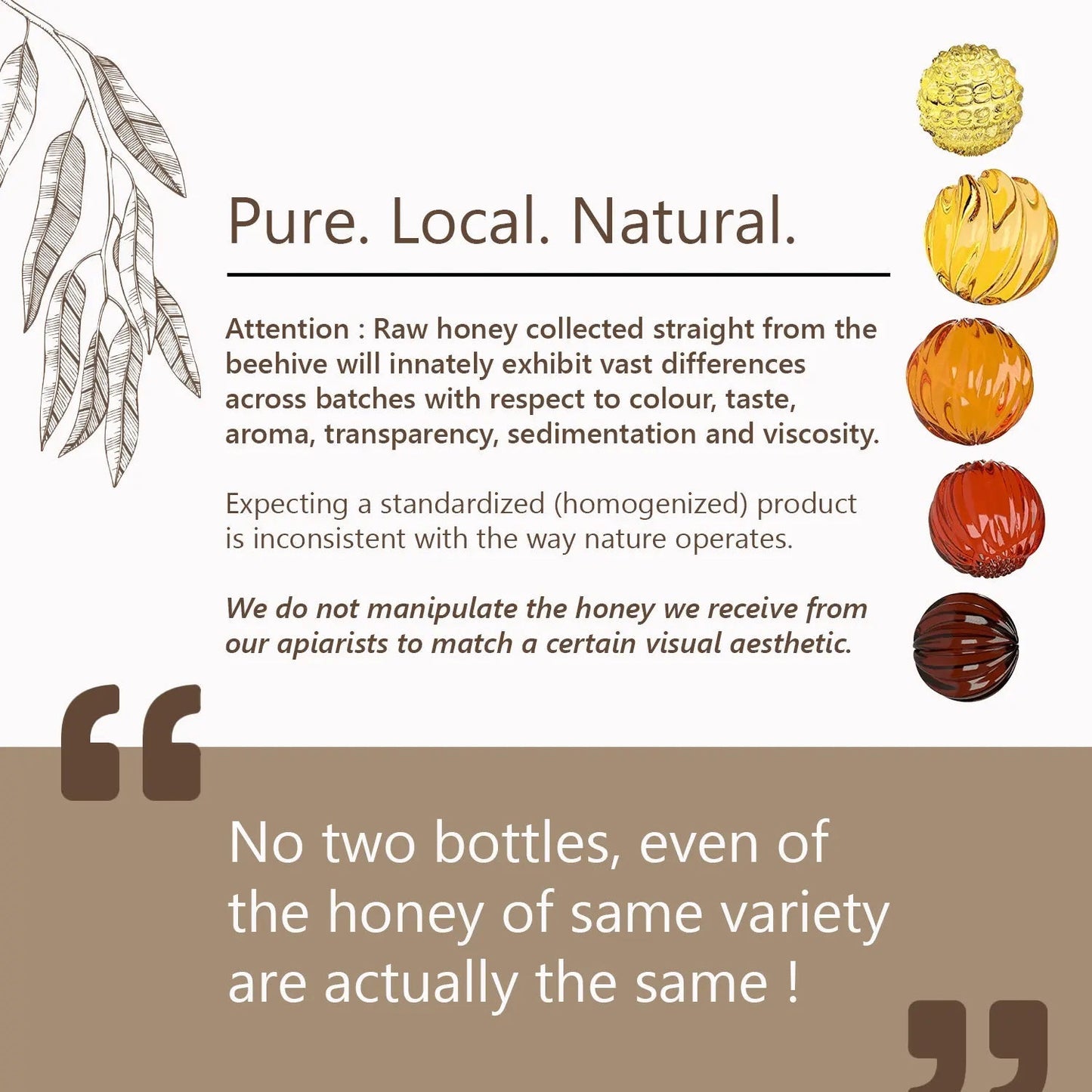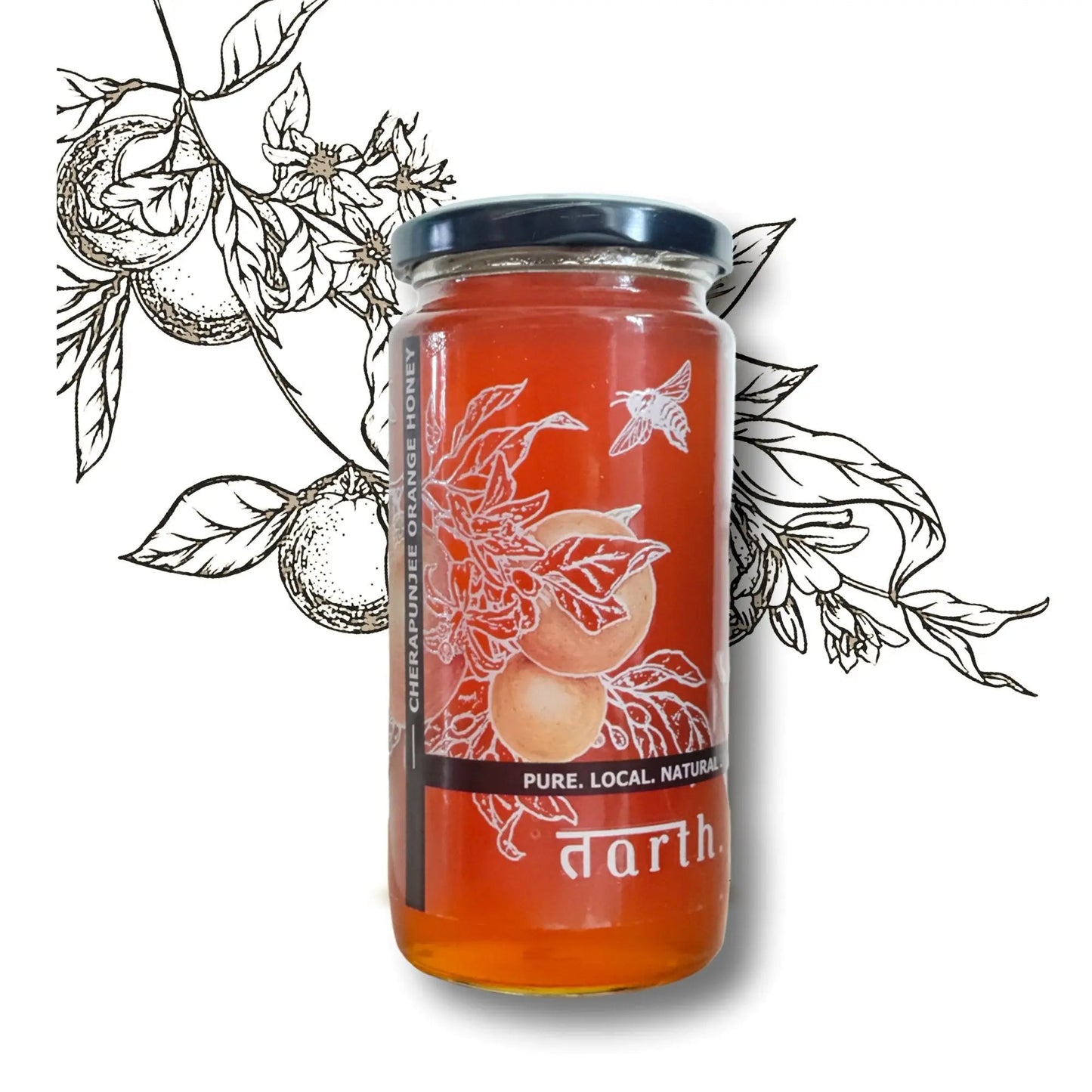Here's why only 1% of Indians Can Access Orange Blossom Honey Annually
- Limited Annual Yield: Only 500 kilograms are produced, making this honey exceptionally rare.
- Indigenous Harvesting by the Khasi: Honey is hand harvested from tree hives in Orange Blossoms in small batches.
- Brief Harvest Window: With orange blossoms blooming only once a year, the Khasi have a narrow window for collection, yielding small, exclusive batches.
Tarth Raw Cherrapunjee Orange Honey - 100% Pure | Natural | Unprocessed
Tarth Raw Cherrapunjee Orange Honey - 100% Pure | Natural | Unprocessed
Couldn't load pickup availability
Get Yours Before It’s Gone (50 Jars remaining) – This Season’s Rarest Secret Won’t Last Long!
The land of mists and mellow fruitfulness is also home to the ‘orange’ or ‘orange blossom’ honey. This honey is made by bees that feed on nectar from orange flowers. It is mainly found in the orchards of Khasi Mandarin - located in the Ri-War area of East Khasi Hills.
The Mandarin Orange is one of the original citrus species – the ancestor of many hybrid citrus fruits available today. The specialty of Khasi Mandarin grown in this region is that it has a GI tag associated with it.
Type: Mono floral
Flavor: Sweet, Light, Floral
Color: Light Yellow to Colorless
Nectar Source: Citrus reticulata / Mandarin Orange
Bee: Apis Cerana Indica
Harvesting Season: November to January
Region of Origin: Khasi Hills, Cherrapunjee Region, Meghalaya (Mawphu Village / Khatarshnong Vilage)
The Khasi tribe, known for farming the fruit, continue to use traditional, age-old methods of cultivation and harvesting, ensuring their produce remains entirely free of chemicals and pesticides—making it 100% organic.
For harvesting Orange Honey, the Khasi women beekeepers rely on time-honored techniques, using Ksing—hollow wooden logs—as beehives to collect honey from the wild bees. This method, passed down through generations, allows the bees to thrive in their natural environment, ensuring the honey is pure and untainted by modern interventions
Note: Crystallized honey is still honey! It’s perfectly safe to eat and doesn’t mean that your honey has gone bad. In fact, it’s just the opposite! It means that your honey is natural and oh so good.
You can still liquify it by placing your jar in warm water and sunlight.
